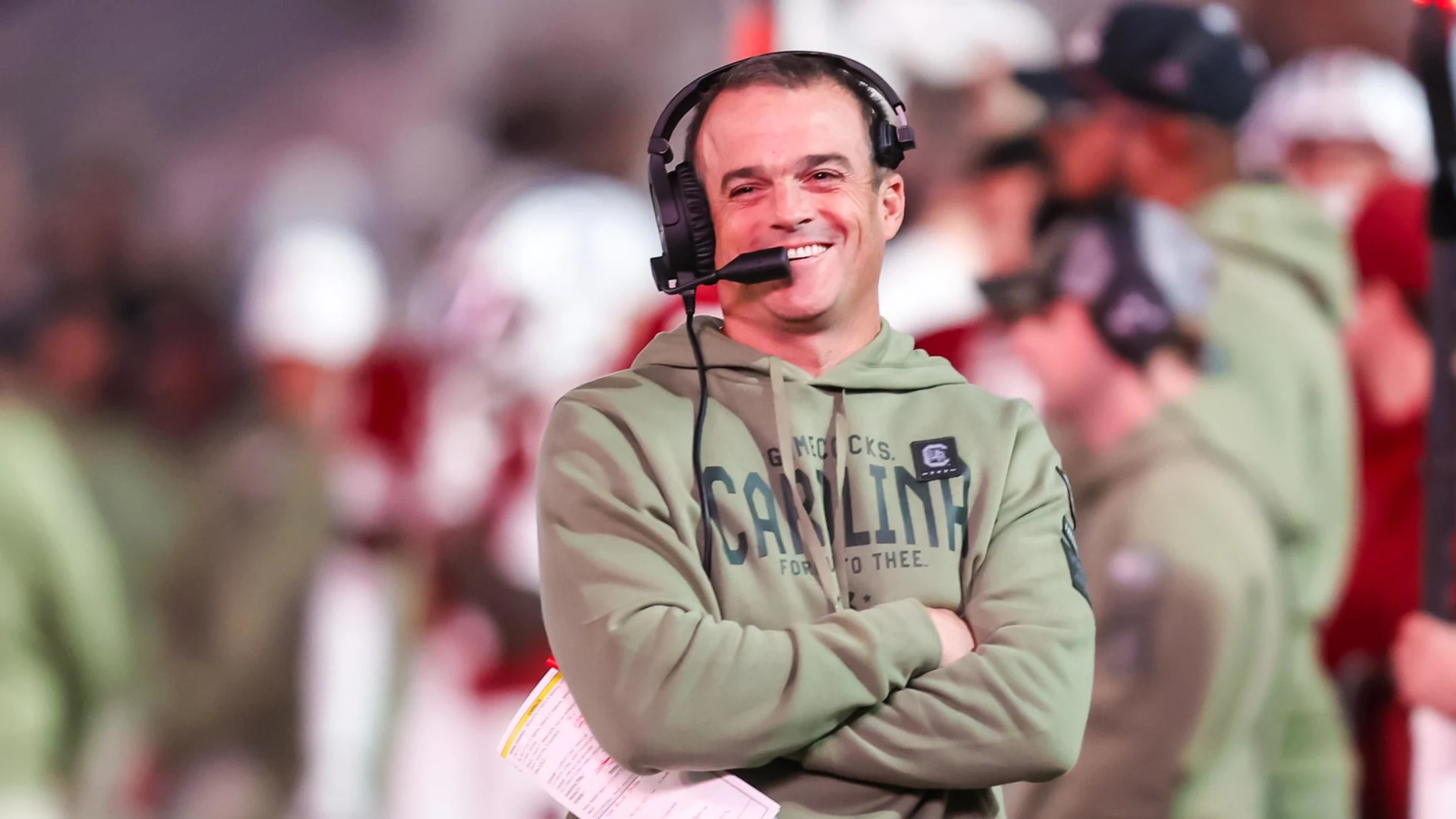The South Carolina Gamecocks have quietly but steadily worked their way into the upper echelon of Southeastern Conference football, and as the 2025 season gets underway, the program finds itself ranked as a top 10 team in the SEC standings. It’s a testament to both the long-term vision of the coaching staff and the consistent, sometimes underappreciated, development of talent in Columbia. This isn’t just about potential anymore—it’s about proven performance, growth, and a deepening belief that South Carolina football is no longer just a plucky underdog, but a legitimate threat within the nation’s toughest conference.
After years of hovering in the middle of the pack or fighting to climb out of the conference cellar, the Gamecocks are beginning to earn national and regional respect. The 2025 preseason rankings saw them crack the SEC’s top 10, a position that would have seemed like a pipe dream for many just a few seasons ago. But when you break down how the program has evolved—recruiting wins, coaching stability, NIL strategy, and player development—the current trajectory feels much more like the culmination of a process than an unexpected fluke.
South Carolina’s surge into the SEC’s top 10 standings didn’t happen overnight. It’s the result of a methodical climb, with major strides taken during the past two recruiting cycles. Over the last few years, the Gamecocks have consistently landed top-25 recruiting classes and have increasingly kept in-state talent from fleeing to regional powerhouses like Georgia, Clemson, or Alabama. The 2024 recruiting class featured several four-star prospects who are already making an impact on the depth chart. Add to that a string of portal wins that filled key needs at linebacker, wide receiver, and offensive line, and it’s clear that South Carolina has done more than just build a team—they’ve built a roster equipped to compete in the brutal SEC week after week.
A key figure in South Carolina’s emergence has been head coach Shane Beamer, who has now firmly planted his flag in Columbia. Entering his fifth full season at the helm, Beamer has moved past the stage of promising potential and into the phase of delivering measurable results. Under his leadership, the Gamecocks have shown a flair for the dramatic, pulling off upsets against top-ranked opponents, energizing the fan base, and—most importantly—putting together back-to-back winning seasons. What’s different this time around, heading into 2025, is that the Gamecocks aren’t being viewed as a spoiler team anymore. They’re being viewed as one of the SEC’s legitimate contenders for a top-tier bowl game.
Part of what makes South Carolina so intriguing this season is the returning experience at key positions. Quarterback play has stabilized, with junior signal-caller Grayson Laube expected to lead the offense after a solid sophomore campaign that saw him throw for over 2,800 yards with 21 touchdowns and only 7 interceptions. While not yet considered among the elite QBs in the SEC, Laube brings a level of poise and decision-making that fits perfectly in offensive coordinator Dowell Loggains’ balanced scheme. The Gamecocks aren’t necessarily lighting up the scoreboard, but they’re executing efficiently, controlling time of possession, and minimizing mistakes—three critical ingredients for success in a league as competitive as the SEC.
On the ground, the Gamecocks bring back their leading rusher from 2024, sophomore sensation Trevon McCray, who rushed for 1,102 yards and 12 touchdowns as a freshman. His combination of burst, vision, and durability has given the South Carolina offense a dangerous dimension it had lacked in previous years. McCray’s ability to take over games in the fourth quarter has made him a fan favorite and a key figure in the Gamecocks’ offensive identity.
The receiving corps, while not headlined by a household name, is deep and consistent. Wideouts Jacoby Henderson, Malik Frazier, and tight end Camden Sapp form a trio that can stretch defenses vertically and make tough catches in traffic. All three are experienced, physical, and smart route runners. While other SEC teams might boast more explosiveness, South Carolina’s receivers win with technique and reliability—two traits that have become hallmarks of the program’s transformation.
Perhaps the biggest reason for South Carolina’s top-10 ranking in the SEC, however, lies on the defensive side of the ball. The Gamecocks return nearly their entire front seven from 2024, including breakout defensive end DeShawn Little and linebacker Koby Sanders. Little led the team with 9.5 sacks last year and has received preseason All-SEC recognition for 2025. His motor, coupled with a relentless interior push from defensive tackles Elijah Kinlaw and Omar Knight, gives South Carolina one of the most disruptive defensive lines in the East. That pressure has paid off in the secondary as well, where cornerbacks Marcus Glover and Dom Reid have combined for 8 interceptions over the past two seasons. The defense isn’t just fast—it’s physical, disciplined, and opportunistic, traits that reflect the culture Beamer has instilled.
South Carolina’s rise has also coincided with some power programs in the conference undergoing transitional phases. Alabama is adjusting to the post-Saban world under Kalen DeBoer, Florida remains inconsistent, and LSU has struggled with defensive identity. Meanwhile, Georgia is still elite, but the SEC landscape is more competitive and fluid than it’s been in years. This window has allowed programs like South Carolina, Kentucky, and even Missouri to gain meaningful traction. In that sense, the Gamecocks’ ascension isn’t just about what they’re doing—it’s about seizing opportunity in a shifting landscape.
Off the field, South Carolina has also taken important steps forward. The athletic department has embraced NIL, building partnerships and infrastructure to help student-athletes capitalize on their brand while keeping them focused on football. The Gamecock Exchange, launched in 2023, has grown significantly and is now one of the SEC’s more robust NIL platforms. It’s helped retain key players and attract portal talent who want to play in a stable, supportive environment. These advancements, while not always visible on Saturdays, play a critical role in helping a program like South Carolina keep pace with the bluebloods.
Fan engagement has been another underrated factor in the Gamecocks’ momentum. Williams-Brice Stadium continues to be one of the most intimidating venues in the conference, and the loyal fan base has made it clear that they’re ready for more than moral victories. After years of “wait until next year,” 2025 finally feels like this is the year to make noise. The schedule is far from easy—with road games at Texas and Georgia, and home dates against Tennessee and Ole Miss—but that’s life in the SEC. The difference now is that South Carolina enters those matchups with confidence, not just hope.
The Gamecocks’ climb into the SEC top 10 isn’t just about recognition; it has real implications for their postseason aspirations. With the expanded College Football Playoff format, a team like South Carolina doesn’t need to win the SEC outright to have a shot at the national picture. Finishing in the top half of the league, with a strong overall record and a few key wins, could put them in contention for a CFP spot or, at the very least, a New Year’s Six bowl. That kind of exposure and opportunity can catapult a program from solid to elite status.
While the rest of the SEC may still view South Carolina as a tier below the likes of Georgia or Alabama, that perception is beginning to shift. Within coaching circles, there’s growing respect for what Beamer and his staff have built. They’ve recruited strategically, developed talent consistently, and managed to avoid the kind of internal chaos that has plagued other programs. That consistency is rare, and it’s valuable. It allows players to buy in, develop over time, and contribute meaningfully instead of transferring out or getting lost on the depth chart.
In a conference as cutthroat as the SEC, there’s no such thing as standing still. Programs are either ascending or falling behind. For the first time in a long while, South Carolina can say with confidence that it is climbing—and that climb is backed by substance, not just slogans. The expectations for the 2025 season are grounded in tangible progress and realistic ambition. It’s not about hoping to go 6-6 anymore. It’s about aiming for 9 or 10 wins, competing for an SEC East title, and breaking through into the national conversation.
As the season unfolds, the spotlight will grow brighter. With attention comes scrutiny, and the Gamecocks will have to prove week in and week out that their ranking is no fluke. Depth will be tested. Mistakes will need to be limited. And the coaching staff will have to continue making smart, aggressive decisions. But they’re prepared for that challenge. The program has matured. The players have bought in. And the fan base is all in.
Being ranked in the top 10 of the SEC might not mean a parade, but for South Carolina, it means validation. It means progress. It means momentum. It means that all the effort—from recruiting to coaching to fundraising—hasn’t been in vain. The Gamecocks have earned their seat at the table. Now, the challenge is to stay there and keep climbing.
As fall Saturdays approach and the SEC race heats up, don’t be surprised if South Carolina ends up playing a major role in how things shake out. Whether it’s knocking off a top-5 opponent, pulling out a gritty win in a rivalry game, or winning late in the season to secure a big-time bowl bid, this is a team that won’t back down from the moment. They’ve worked too hard to get here, and they’re not satisfied with just being ranked. They’re ready to win. And that might be the most dangerous thing of all.



